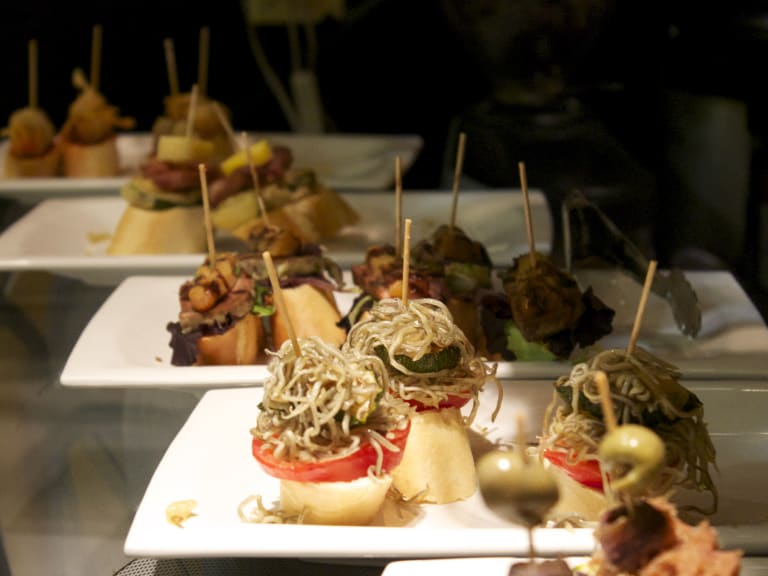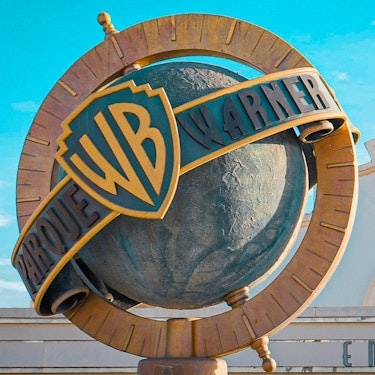More about: 5 Best Tapas Tours in Madrid
Many tourists can't do without including gastronomy in their list of what to see and do in Madrid. If you are part of this group, the tours listed below will help you discover the city's gastronomic horizon.
Since it was founded, the Spanish capital has welcomed thousands of people who have come to the centre of the peninsula full of enthusiasm and the typical recipes of their city. As a result, Madrid is home to quality bars and restaurants, and the tours below will take you to the best establishments.
1. Gastronomic tour of tapas, wine tasting and ham tasting

The pearl of the national gastronomy is the protagonist of this tour. The activity is designed for all those who want to learn more about ham. You will learn to distinguish the different qualities and designations of origin, accompanying each bite with a glass of red wine.
As well as ham, you can taste salchichones, chorizos, lomo (pork loin) and Manchego cheese. These tours take place in the centre of Madrid and cover the most outstanding bars in the area.
Practical information
- Duration: between two and three hours
- Approximate price: between 50 € and 70 €.
2. Tapas tour and wine tasting in the old town of Madrid

This urban tour will take you to the best tapas bars in the old town. An expert guide will accompany you from restaurant to restaurant explaining the main characteristics of the place and each dish.
Normally, tours of this type include around 10 typical tapas (battered cod, cured ham, omelette, anchovies in vinegar, etc.) accompanied by a beer or glass of wine. Generally, these excursions involve a maximum of 12 people.
Practical information
- Duration: about three hours
- Approximate price: between 70 € and 90 €.
3. Historical tour of Madrid with tapas tasting

This urban tour combines the explanations of an expert guide with the best of national gastronomy. By choosing this activity you can discover the history of the capital in a fun way.
Below you can see the most common stops on this type of tour, where you can taste sausages, chorizo stewed in white wine, gazpachos, paella and juicy croquettes.
- Calle Preciados, the shopping street in the old town. It connects two central places: Sol and Gran Vía.
- Puerta del Sol, the kilometre zero of Spain. The guide will tell you about the main historical landmarks and interesting anecdotes. If you go to Madrid in December, specifically on the 30th and 31st, this urban space hosts the pre-New Year's Eve celebrations and the New Year's Eve celebrations.
- Plaza de Isabel II, the space that pays homage to "La reina castiza". Her statue stands on a pedestal and overlooks the Teatro Real.
- Plaza Mayor, designed in the 17th century by Juan de Herrera and Juan Gómez de Mora. Once here, you will see the Casa de la Carnicería, the statue of Felipe III, the Casa de la Panadería and the Arco de Cuchilleros.
- Plaza de la Villa, the medieval corner of Madrid. This small esplanade is surrounded by three stately buildings: Casa de la Villa, Casa de los Cisneros and the Casas y Torre de los Lujanes.
- Royal Palace, the largest noble residence in Western Europe.
Practical information
- Duration: 3 to 4 hours
- Approximate price: between 70 € and 90 €.
4. Excursion to the wine cellars of the region with wine tasting

Although you may not be aware of it, Madrid has a wine-growing area that includes the towns of Navalcarnero, San Martín de Valdeiglesias, Arganda and El Molar. In this area, vines have been grown since ancient times and although production has suffered a decline since the 1960s, in the last decade, the Madrid Designation of Origin has regained importance.
This tour will take you to visit the region's wineries, tasting a glass of red wine with the explanations of some oenologists. As usual, the bus stops in two villages:
- Chinchón, a village of 5,000 souls, just under an hour's drive from the capital. It is mainly known for its Plaza Mayor, a place for celebrations, meals and bullfighting festivals. If you visit Madrid during the winter, I recommend you book the tour. In February, this peaceful town comes alive thanks to the Medieval Market, an event that fills the streets with horseback tournaments, children's attractions, theatre, crafts and much more.
- Colmenar de Oreja, one of the most beautiful municipalities in the region. Its main attraction is the Church of Santa María la Mayor, which houses a great organ built by the German Gerhard Grenzing. The town is also known for its limestone quarries; in fact, you will have seen the rocks quarried here during your visit to the Royal Palace in Madrid.
Practical information
- Timetable: buses usually leave between 9.00 and 10.00 am
- Duration: approximately 6 hours
- Price: between 130 € and 150 €.
5. Day trip to the Ribera del Duero, wine specialist

Ribera del Duero is a region on the banks of the Duero. In this area, vine cultivation dates back to Roman times. In the Middle Ages, the Cistercian monks continued the tradition by producing higher quality wines, while the first underground cellars date back to the 16th century.
Today, cultivation has spread to four provinces - Soria, Valladolid, Burgos and Segovia, which you can easily reach from Madrid -and its harvests are nationally and internationally renowned for their quality.
The tours usually depart from a central point in Madrid, such as Atocha station. Once on the road, an air-conditioned van or coach will accompany you to the region. An expert guide will be on hand at all times, and the total price includes wine tasting and snacks from the wineries. The tours usually stop at the following locations:
- Aranda de Duero, the capital of La Ribera. The most famous monuments are the Church of Santa María, the Palacio de los Berdugo and the Puente Mayor. Hidden beneath the surface is a network of tunnels that house underground cellars dating back to the 15th and 14th centuries. If you want to take the tour during Easter Week, you should book this excursion from Madrid in advance. Locals and tourists alike flock to the streets to take part in the processions and to see "La Bajada del Ángel", a religious celebration held on Easter Sunday.
- Curiel de Duero, a riverside municipality in the Cuco Valley. The village is dominated by the Castillo de Arriba, the oldest fortress in the province of Valladolid. I recommend climbing to the top to enjoy the panorama over the old town, the vineyards and the river. Another interesting monument is the fortified Palace of the Zuñiga family, the seat of the town hall. In the past it was used for defensive purposes and as a noble residence.
- Roa, a town steeped in history. The town centre stands on a rocky spur overlooking the river. Its privileged position is no coincidence: Roa formed part of the border between the Muslim and Christian kingdoms. Its medieval walls were built by the will of Violante of Aragon, the wife of Alfonso X the Wise.
- Sotillo de la Ribera, a charming town. The town's golden age was reached during the reign of Charles III, which coincided with the commercial success of wine. Sotillo's opulent past is reflected in the elegant buildings of the old quarter.
Practical information about the Ribera del Duero
- Timetable: excursions usually start at around 9:00 a.m.
- Duration: between 10 and 12 hours
- Price: between 150 € and 200 €.
Why is it advisable to take a gastronomic tour in Madrid?

The Spanish capital has its own unique recipes and over the centuries has attracted thousands of people from nearby communities. Therefore, its gastronomic offer is very extensive and a tour of this kind will help you discover the main dishes. In addition, between restaurants you will be able to learn more about the history of the city thanks to the explanations of an expert guide.
























